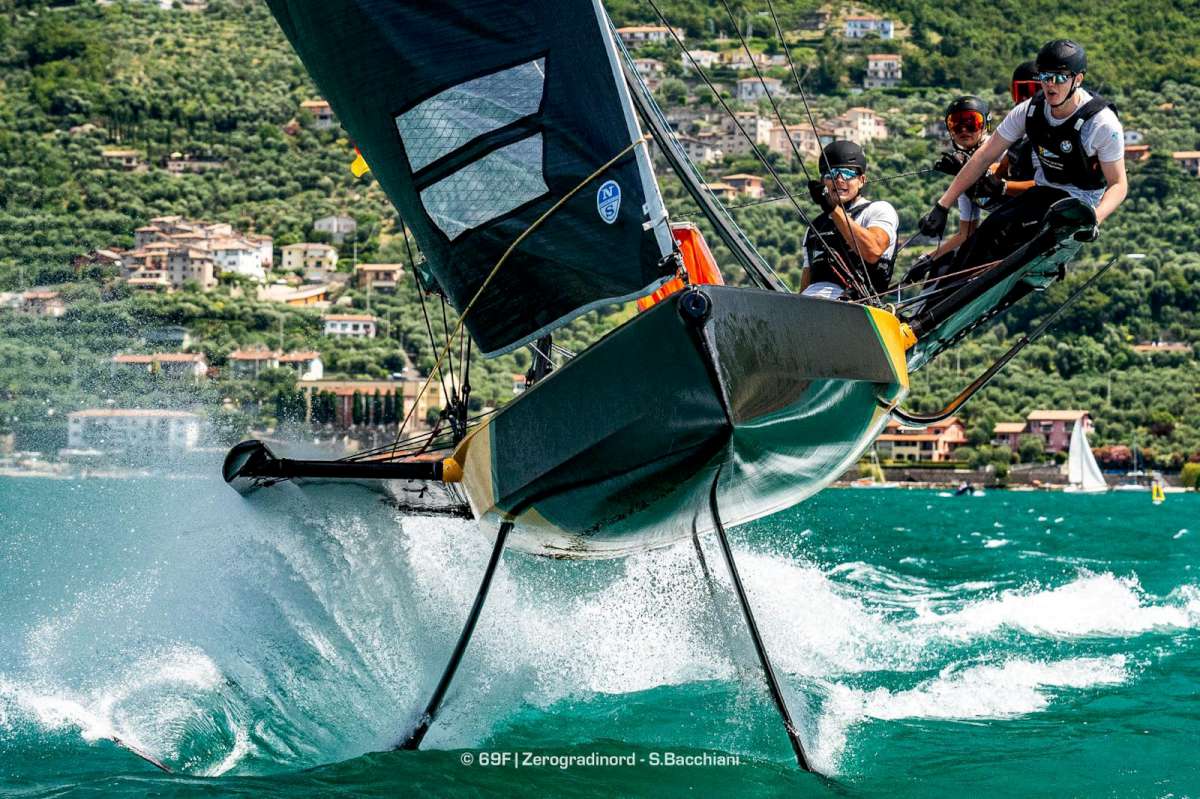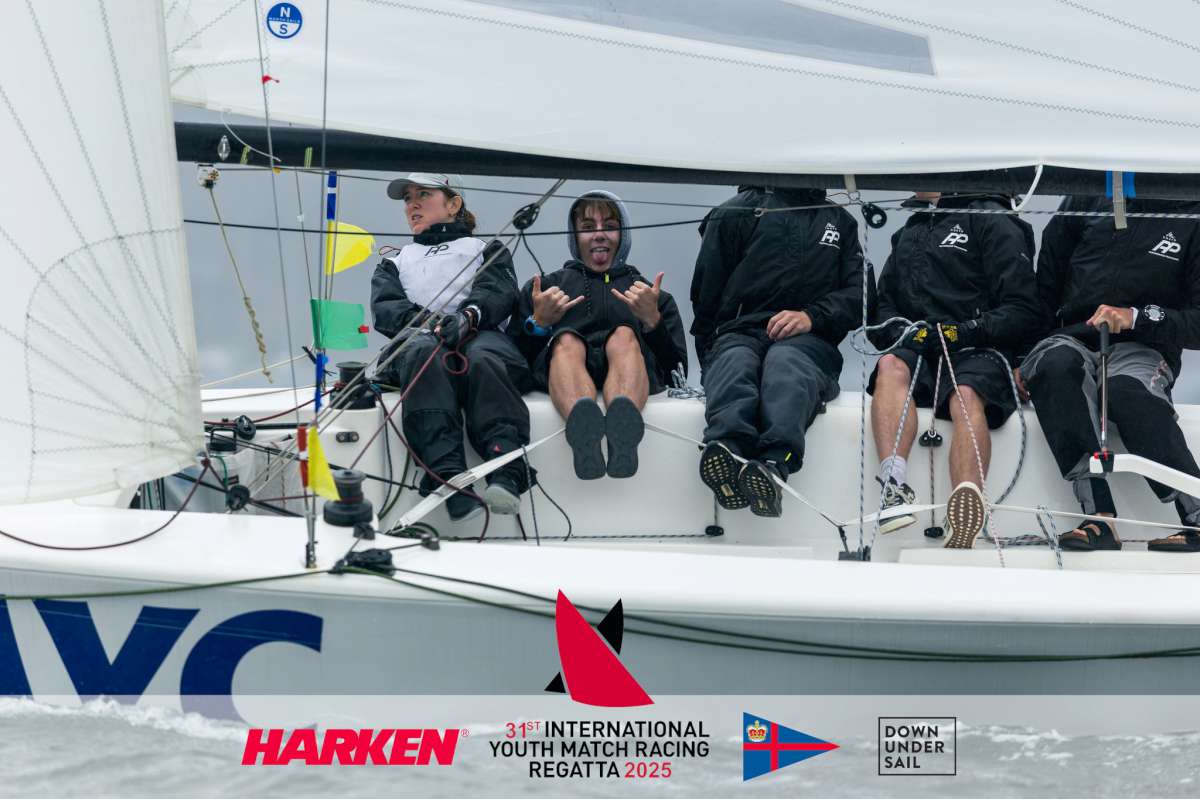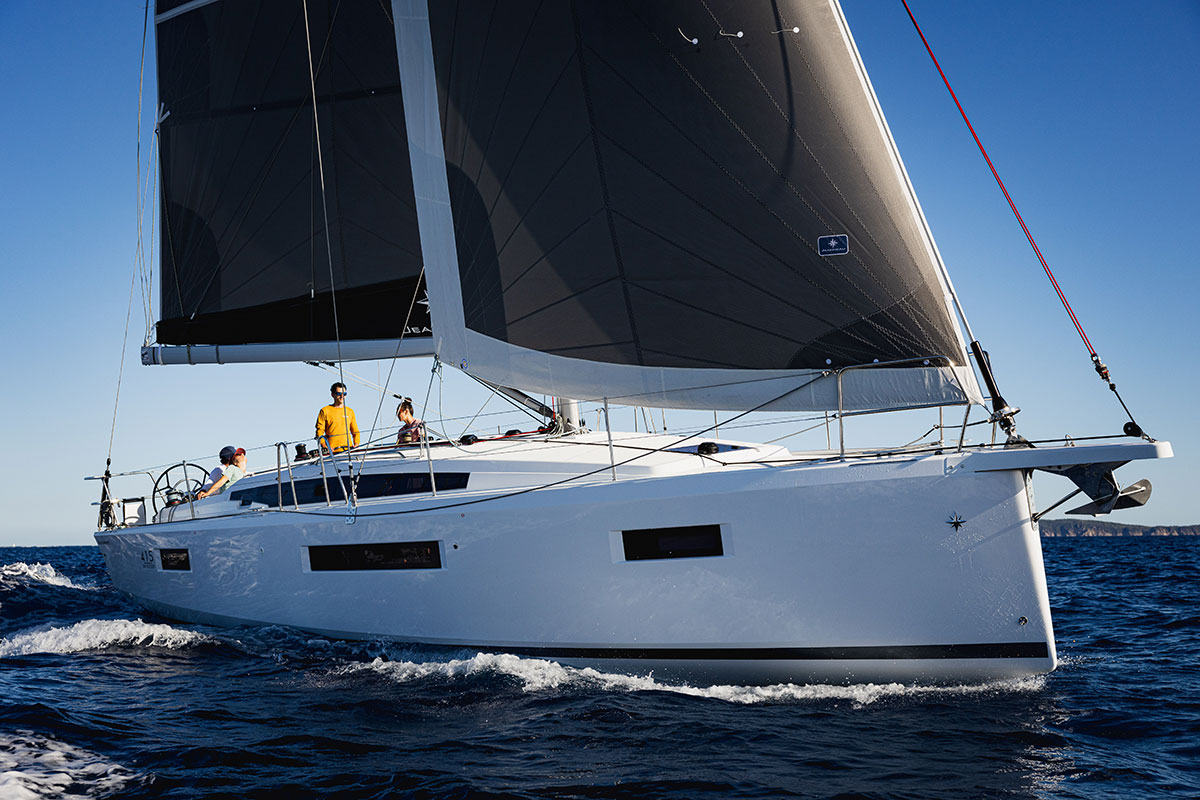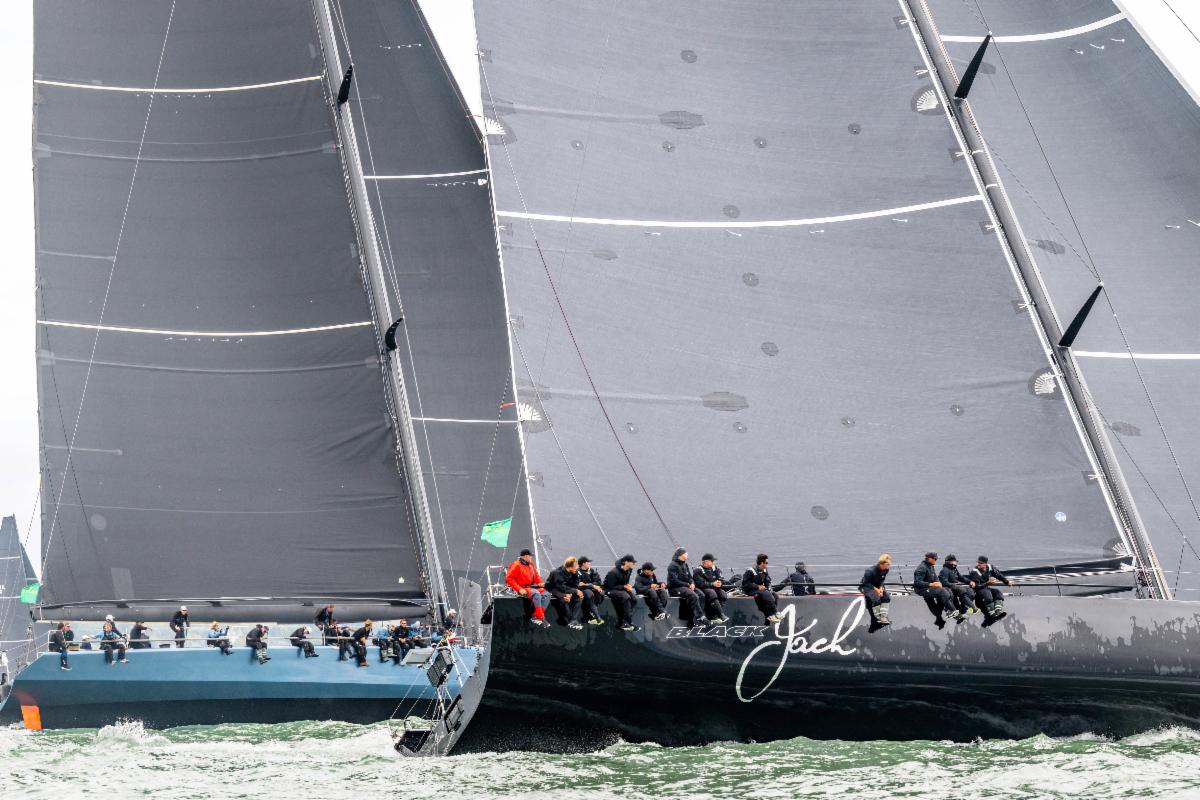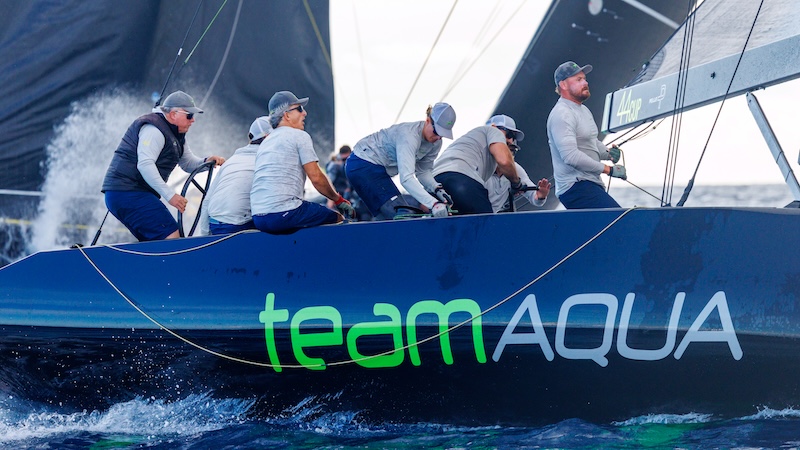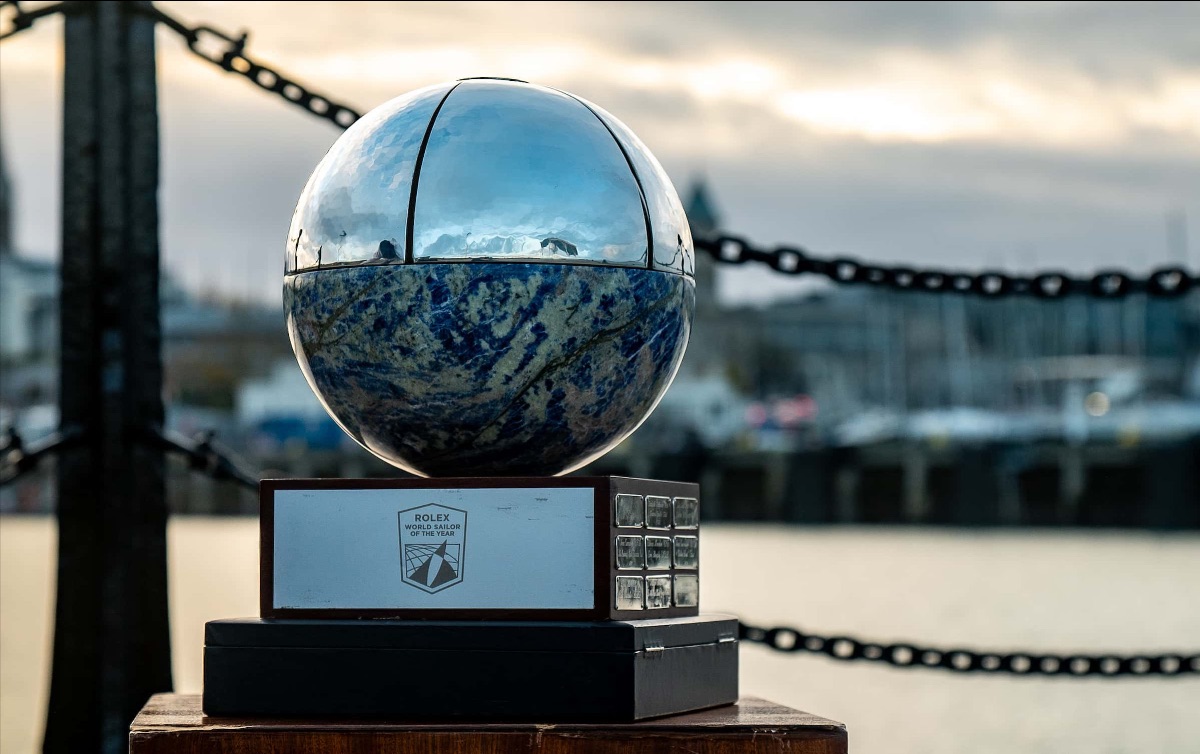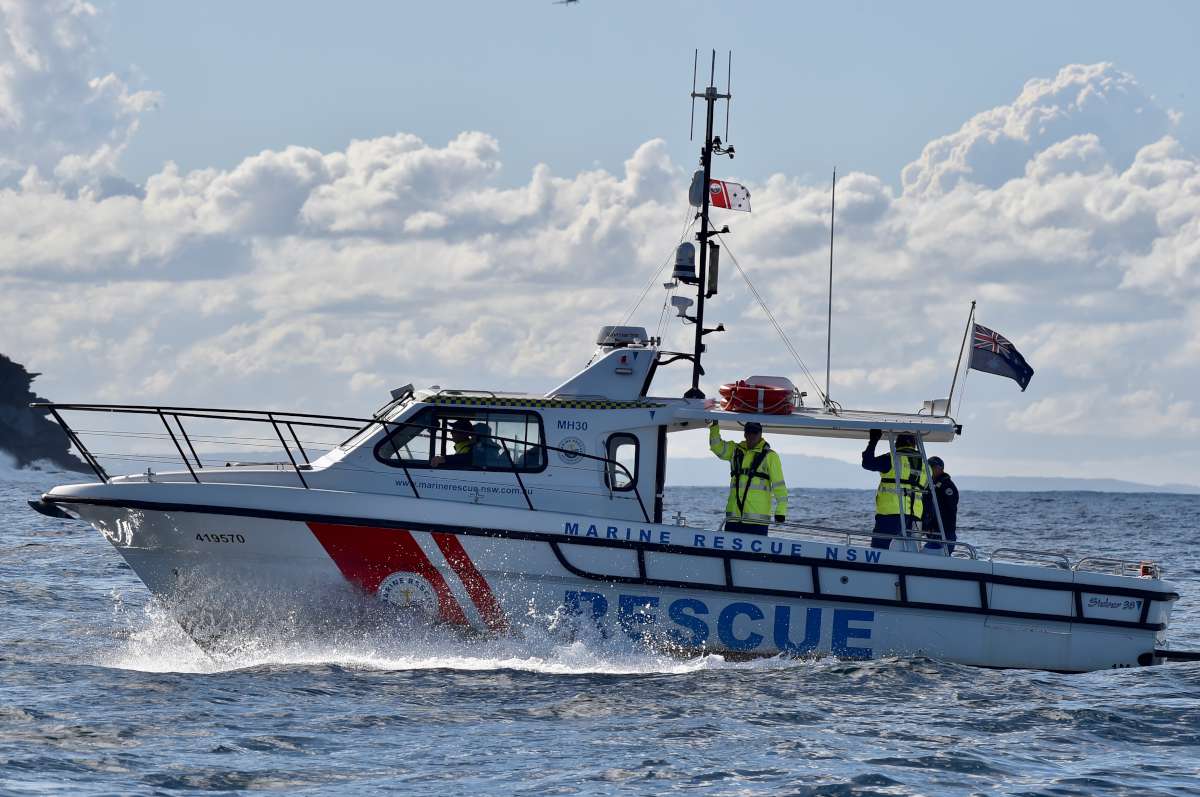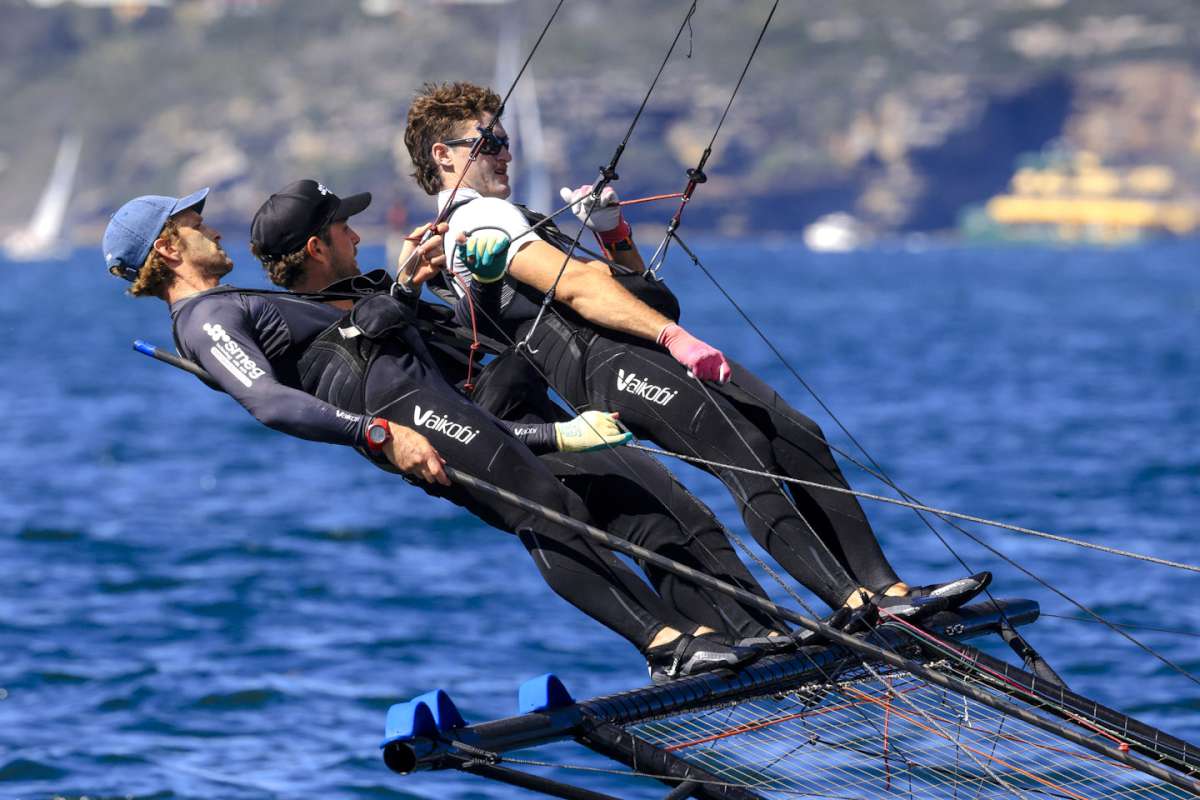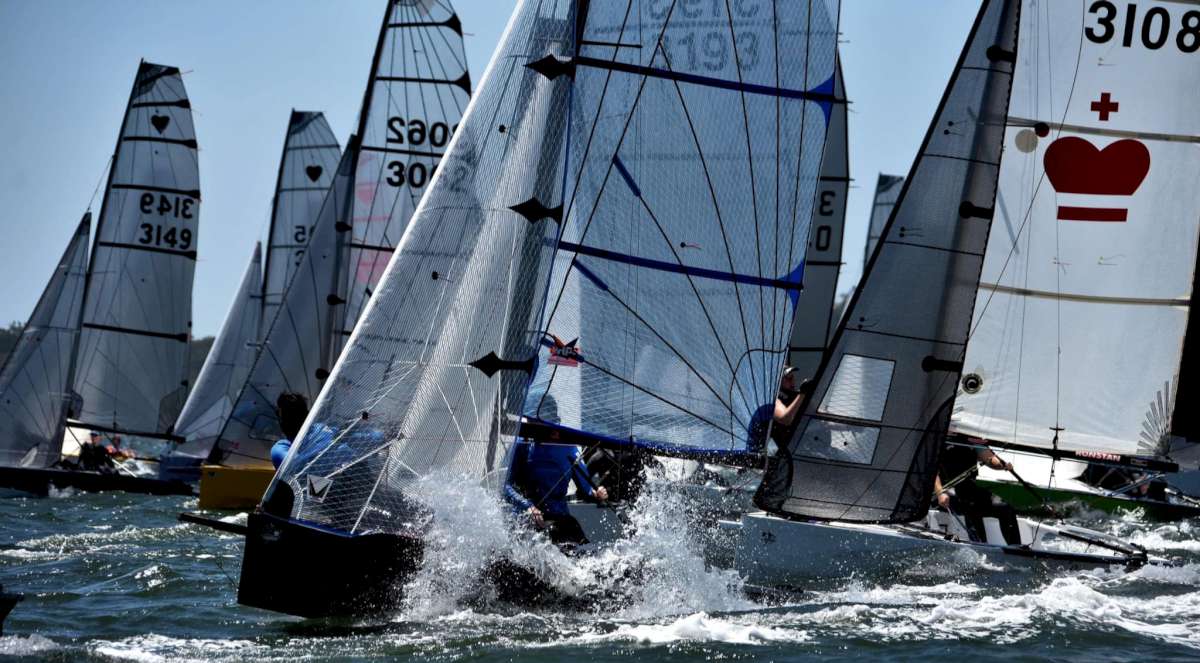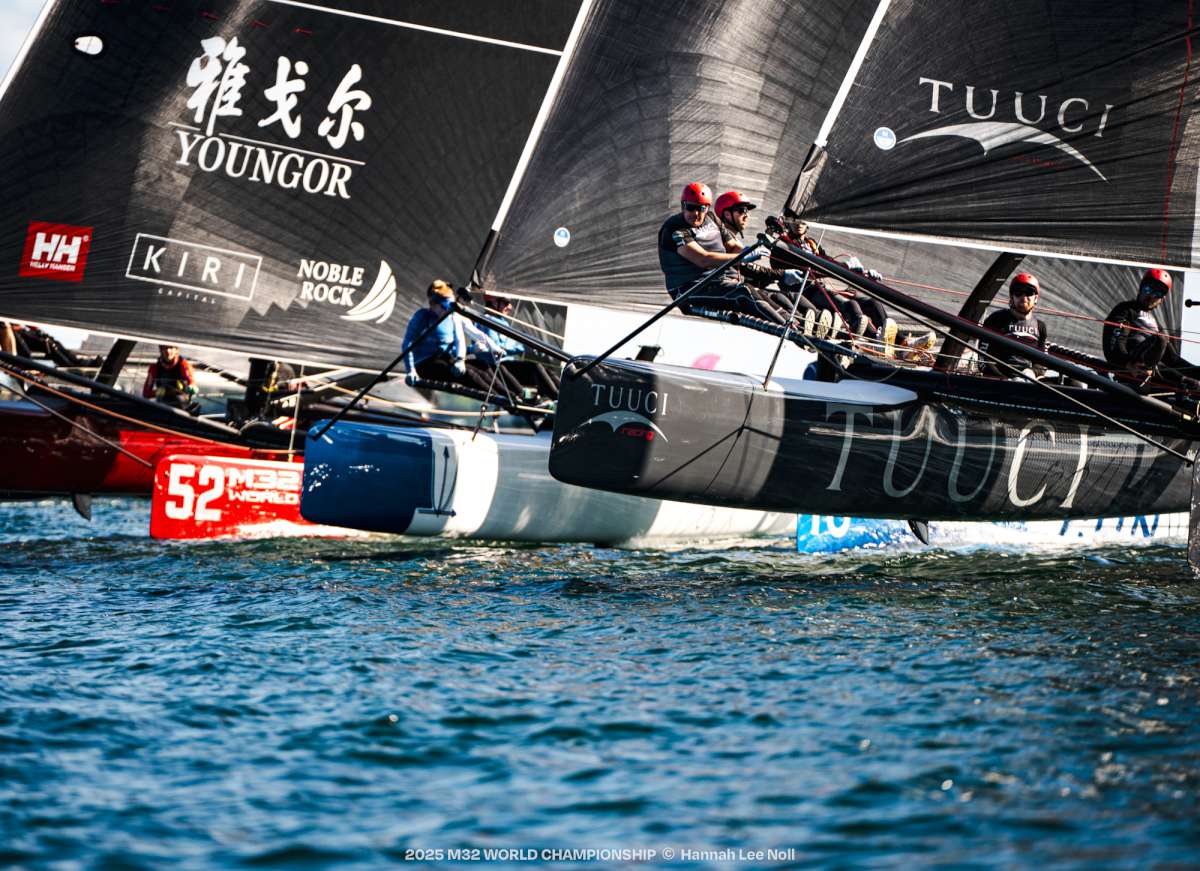According to Dufour yachts the overriding purpose behind its Grand Large 382 is to provide sailors with a Dufour 410 in a smaller length.
Indeed, from the aft platform to the for’ard berth, space is the key factor. I could not get enough information to calculate the Dufour 382 interior hull volume but using comparisons with other yachts tested in this size range, I still found some interesting points.
Both ballast and displacement are light for yachts in this class, yet the ballast ratio of 0.26 is about standard. Given this lightness, its sail area is also quite small comparatively.
What you end up with is a yacht with a displacement to length ratio placing it outside the light cruiser/racer category and just into the more defined pure cruiser category. The sail area to displacement ratio also places the 382 squarely into suitable for ocean crossing range. The Dufour 382 is a beamy boat with a long deep keel. One would expect nice sea motion when out in the open.
Performance
Looking at the images you can see the chine starts quite well aft and is followed with a sheering out of the topsides. By the time the chine reaches the stern, there is a nice flat ‘scarfing’ for the hull to sit on when heeled.
This also provides good interior space aft and a large cockpit area on deck.
Swept back spreaders and no backstay with the mast well forward lets a large overlapping headsail complement the smaller self-tacker to give a good sail range on this high aspect rig. A tall mast with a long boom, but a short forefoot on the self-tacking headsail, means most of the driving power comes from its mainsail. Dufour have utilised some neat design tricks to keep such a large piece of cloth manageable for a short-handed crew. For example the boom is angled downwards, so when you get to the mast the gooseneck is at about waist height. Raising and lowering the main, especially in a tricky reefing situation, is markedly improved when you can easily reach over the top of the boom, or not need to climb the mast to reach the head of the sail. Back in the cockpit the boom is raised well above the average crew’s height. The traveller runs the full width of the cabin top forward of the companionway, to give as much control as you need and plenty of length to dump it down the track in an emergency.
Boat speeds were good for a light 36 footer. Pinching her on a beat in 16 knot true wind speed we could easily make 30° off the wind and still do six knots on the self-tacking jib. Bear away to 60° and she leapt up to 7.5 to 8kt. At 90° and a lessening breeze, she still kept over the 7kt with the small headsail. This Umberto Felci design appears optimised to hit theoretical hull speed early on, at all points of sail.
It is a well-balanced ride on all points. Looking at the side plan view, I see a deep canoe body draft that runs well aft of the keel before rising sharply to the transom. I feel, combined with the deep keel, this would see good tracking upwind and a nice motion down. The aft underwater hull section shape, compared to others in the range, suggests to me there would not be much ‘stern slap’ when at anchor.
People movement is also considered, both upstairs and down. The self-tacking headsail track is recessed as are the halyard lines running aft from the mast. The German mainsheet system hugs the cabin top along the deck, inside the genoa tracks.
The high-sided cabin top is not overly wide so provides easy side access while maintaining high headroom in the cabin.
Wide side decks means plenty of hatches on the coachroof for light down below. The expansive non-opening hatch across the front of the cabin top behind the mast makes for a beautiful light down below.
The cockpit has an added ten centimetres from its predecessor the Dufour 380. This added length makes it easy for the helmsman to sit either on the low coamings or use the dedicated seats. The width makes movement from companionway to transom easy as well.
Benches take advantage of the added length and, all in all, it makes for a cosy sit around the cockpit table when resting at the end of the day.
The topside chine at the stern results in a widened transom allowing a huge transom drop-down door for water access. The door drops a step down from the cockpit floor to bring it closer to the water, making egress easy with its inbuilt recessed boarding ladder.
Interior
Does the interior fitt a 41 footer into the 36?
To enhance the offer, Dufour have provided potential buyers with five interior options: two cabin or three cabin, one or two heads and a longitudinal or L-shape galley.
Our test boat had the single head/shower to port of the companionway. A hanging locker is on the starboard side nestled between the large athwarthsips aft cabin and the forward facing navigator’s seat.
The in-line galley to port really opens the cabin saloon up with space for a 160 litre refrigeration two pull-out drawer unit.
You would think the loss of the port side saloon berth would restrict the amount of seating down below, but it is not so. The starboard saloon extends along the for’ard bulkhead across the centreline, providing seating for five around the table. When the under table seat is pulled out and the navigator’s desk cleverly converted into more seating, you can then seat an extra three.
Saloon table extends lengthways so, when extended it does not clutter the chef in the galley. The table goes from one metre to 1.4 with simple fold out extensions.
The added selling point of the Mediterranean-style, in-line galley is the option of including the second head. Quite a feature for a 36 foot yacht. In fact, importer of the Dufour yacht range Matt Hayes of Performance Cruising Yachts stated two toilets throw down a bit of a challenge to the 40+ foot market.
If the option is the single aft cabin you end up with a separate shower recess aft of the head that also gives access to the large port side lazarette where the other cabin would be. The starboard-side, athwartships aft berth is over two metres long. If the option is for the two aft cabins the size of the berths is more than enough to accommodate two persons.
Since the saloon table extends past the centreline, the forward cabin has double doors to open the cabin right up. Here there is another large bed with shelving down either side; there is also added storage under the bed.
Construction is hand laminated glassfibre with the floors laminated into the structure as well. The deck is sandwich foam for noise deadening and lightness. The interior woodwork can be in moabi or oak for taste.
The finish in the Dufour’s is of good quality. Hatch locks are vibration proof and there are plenty of lockers around the interior.
Hayes reckons this boat represents a great opportunity for a beginning sailor to get a good, fast and easily handled yacht that feels much bigger than it actually is, providing value for money.
Hard to argue with that assessment.





